Tsuguo Hongō 本郷 次雄 先生

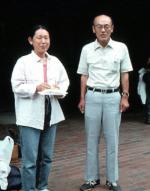
Photographies ci-dessus : Le professeur Hongō à Asahi-no-mori en août 1989 (Forray KMC). Il était alors âgé de 66 ans.
Anecdote : Quand j'ai dit à Hongo Sensei (en 1989) que son nom signifiait "champignon" en espagnol, je m'attendais à ce qu'il le sache déjà, pour avoir cotoyé des centaines de mycologues de tous pays, mais il a fait mine d'être très surpris. - En êtes vous sûr ?...
Je pense que c'est de la délicatesse ou de la pudeur, car je découvre qu'Heinz Clémençon aurait eu la même conversation en 1983.
Biographie rédigée pour l'encyclopédie Wikipédia fr. (2018)
Tsuguo Hongō (本郷 次雄, Hongō Tsuguo) est un mycologue japonais, spécialisé en taxinomie et biogéographie des Agaricomycètes, né le 1er novembre 1923 (12e année du règne Taishō) et mort (à 83 ans) le 2 avril 2007 à Ōtsu.
Lors de son enfance passée à Seta, dans le département de Shiga, il apprécie la vie à la campagne, allant récolter des champignons avec son père. Plus tard, il prend plaisir de prospecter les collines et les bois autours de la ville d'Hiroshima, particulièrement intéressé par les champignons. Il fut très excité de découvrir une Amanite inconnue et, la retrouvant 20 ans plus tard, à Shiga, la nomma Amanita rufoferruginea in 1966.
Biographie
Sorti en mars 1941 (à 18 ans) du collège départemental de Shiga Zensho (aujourd'hui lycée Zézé), il s'inscrit en avril de la même année à la section de sciences de l'école normale supérieure d'Hiroshima (Université Bunrika des Sciences Humaines), où il achève sa troisième année en septembre 1943, pour entrer en octobre de la même année, au département de biologie de l'université des Sciences Humaines de Hiroshima. Il y étudie la botanique sous la direction du Professeur Yoshio Horikawa et obtient la licence (B. Sc.) en mars 1946.
Après la guerre, il retourne dans sa ville natale d' Otsu en mai 1946 en qualité d'instructeur à temps partiel au lycée départemental de Shiga Zensho, puis chargé de cours dès octobre, dans le même lycée, et enfin, à partir d'avril 1948 (Showa 23), enseignant titulaire.
A partir d'avril 1951, il est nommé assistant à la Faculté des Arts et Sciences de l'Université de Shiga, puis promu maître de conférences en juillet 1954, professeur assistant en décembre 1959 et professeur en avril 1966.
Il est reçu en 1961 à son doctorat, intitulé Agaricales du Japon, à l'université de Kyoto, tandis qu'il travaille sous la direction du Professeur Shiro Kitamura2. Le Dr. Hongo est promu Professeur titulaire à l'Université de Shiga en 1968, jusqu'à sa retraite en 1989, où il est nommé Professeur Emeritus.
Il a également été chargé de cours en tant que Professeur invité à la Faculté d'agriculture de l'Université de Mié, en 1971, 1972, 1973, 1974, et 1976; la Faculté des sciences et d'ingénierie de l'Université de Ryukyu en 1973 et 1983; ainsi qu' à la Faculté d'agriculture, puis la Faculté d'éducation de l'Université d'éducation de Nara en 1986. Il a offert ses services à plusieurs associations et comités internationaux et en tant que membre du 3e Congrès International de Mycologie à Tokyo en 1983.
En outre, depuis avril 1985, il a également été à la tête de l'école élémentaire rattachée à la Faculté d'éducation de l'Université de Shiga pendant deux ans.
Il est nommé président de la Société mycologique du Japon de 1987 à 1989. Il prend sa retraite en avril 1989 et devient professeur émérite à l'Université de Shiga.
En 2003, il reçoit le prix Minakata Kumagusu pour ses contributions en mycologie.
Hongō a publié plus de 130 articles scientifiques et une douzaine d'atlas et de guides de détermination. Il a décrit 215 nouveaux taxons d´Agaricomycètes de différents biotopes et latitudes géographiques : principalement du Japon, mais aussi de Nouvelle-Guinée, Papouasie et Micronésie2.
Hongo appartenait aussi à la British Bacteriology Society, à l'American Bacteriology Society, à la Botanical Classification Geography Society (actuellement la Botanical Classification Society) et à la Japan Bacteriology Society.
Itinéraire et milieux de prospection
À l'époque de l'université d'Hiroshima Bunri, Hongo récolte des plantes le plus souvent dans l'île de Miyajima et dans la banlieue de la ville de Hiroshima, et à la même occasion, des champignons étaient aussi récoltés et des croquis réalisés. En 1950, il publie un premier rapport dans Botanical Classification and Geography no.14 Volume 2; intitulé « Omi and Yamashiro High Fungi », qui peut être considéré comme son premier article. Depuis lors, les sites d'inventaires ont été étendus à tout le Japon et les résultats publiés chaque année dans les bulletins des écoles du premier cycle.
Les spécimens récoltés ont été principalement arrangés selon la systématique de Singer, avec quelques modifications apportées dans la compilation des Agarics du Japon, qui constituèrent sa thèse de doctorat en sciences à l'Université de Kyoto en 1961.
Puis brusquement, en 1970, le domaine de recherches s'étendit à l'outre-mer, quand Hongo fut missioné par le Musée national des sciences, pour des recherches sur le Matsutaké d'Algérie et la prospection de la Papouasie-Guinée (1971) .
Par la suite, Hongo visite plusieurs fois les pays voisins et multiplie les recherches de champignons en interaction avec des mycologues étrangers. Corée du Sud (1973, 1975, 1978, 1990), Chine (1981, 1995, 1996, 1998), Taïwan (1982, 1984), etc. Il est également envoyé prospecter en Alaska (1976), dans l'est des États-Unis (1977) et en Sibérie (1979).
Dans l'hémisphère sud, une prospection fongique a été menée en Nouvelle-Zélande et en Tasmanie (Australie) en 1987 et en Nouvelle-Zélande en 1992. Ceci lui permet de réaliser une série de travaux sur la classification et la répartition géographique des champignons agaricoïdes.
Taxons dédiés à Tsuguo Hongō
- Amanita hongoi Bas (1969)2 [« Faux démon blanc hirsute »] シロオニタケモドキ Section Lepidella, stirpe Perpasta, espèce découverte au Japon par Hongō, d'abord rapportée à Amanita echinocephala et Amanita virgineoides avant d'être publiée comme espèce nouvelle par Bas, d'après les notes et planches de Hongō.
- Boletus hongoi3, décrit de l'Inde, Himachal Pradesh.
- Xerula hongoi4, [ezono-birōdo-tsuétaké エゾノビロードツエタケ]
- Pluteus hongoi5,6, Rolf Singer et al.,Holotype #A-4070 1984/09/14 Kyoto Japon
- Russula hongoi7,8, [和名なし] Holotypus par Singer 1989, non validée ?
- Strobilomyces hongoi9, [Ami-ashi-oni-iguchi アミアシオニイグチ]
- Tylopilus hongoi10. Holotypus: TNS, Hongo 3954 Hôte-Substrat/Localité: forêt de conifères sous Abies, Picea, Betula: Japon [和名なし?]
Principaux ouvrages
- Imazeki, Rokuya & Hongō, Tsuguo. (1957). 原色日本菌類図鑑 - Genshoku Nihon Kinrui Zukan [Atlas en couleur des champignons du Japon], Vol. 1, 181 pp., Ōsaka; Hoikusha Publishing Co., Ltd. (ISBN 458630023X)
- Imazeki, Rokuya & Hongō, Tsuguo. (1965). 原色日本菌類図鑑 続 - Genshoku Nihon Kinrui Zukan (suite) [Atlas en couleur des champignons du Japon]. Vol. 2, 224 pp., Ōsaka; Hoikusha Publishing Co., Ltd. (ISBN 4586300426)
- Imazeki, Rokuya & Hongō, Tsuguo. - きのこ (1973年) (カラー自然ガイド) Kinoko (Guide de la Nature en couleur). Hoikusha Publishers Co.,Ltd.
- Hongō, Tsuguo, (1923-2007), Ueda, Toshiho, (1941-2013) et Izawa, Masana, (1950-). 1985, 検索入門きのこ図鑑 Kensaku nyumon kinoko zukan [La recherche des champignons pour débutants]. Hoikusha Publishing Co., Ltd. 保育社11
- Imazeki, Rokuya & Hongō, Tsuguo. (1987). 原色日本新菌類図鑑 I - Genshoku Nihon Shin Kinrui Zukan [Nouvel Atlas en couleur des champignons du Japon], Vol. 1. 315 pp. Ōsaka, Japon; Hoikusha Publishing Co., Ltd. (ISBN 4586300752)
- Imazeki, Rokuya (1904-1991), Ōtani, Yoshio [大谷吉雄], (1919-?), Hongō, Tsuguo, (1923-2007) et Izawa, Masana, Tōkyō, Yama to Keikoku-sha, 1988 (ISBN 4-635-09020-5 et 978-4-635-09020-9), (OCLC 19564715). Tōkyō, Yama-Kei Publishers Co., Ltd12. (ISBN 4635090205)
- Imazeki, Rokuya & Hongō, Tsuguo. (1989). Genshoku Nihon Shin Kinrui Zukan [Nouvel Atlas en couleur des champignons du Japon], Vol. 2. 316 pp. Ōsaka, Japon; Hoikusha Publishing Co., Ltd. (ISBN 4586300760)
- Hongō, Tsuguo, (1989). Selected Mycological Papers of Dr. Tsuguo Hongo [Articles choisis, réimprimés pour le Jubilaire par l'université de Shiga, Faculté des sciences de l'éducation, laboratoire de biologie]. 362 pp. Ōtsu, Japon; Université de Shiga.
- Hongō, Tsuguo, Ueda Toshiho, Izawa, Masana. (1994). [きのこ Champignons]. 384 pp. 新装版山溪フィールドブックス, (ISBN 4635060640) Nouvelle édition Yamakei Field Books, Tōkyō; Yama-kei Publishers Co., Ltd. (ISBN 4635605345)
- Shimoda, M., et Hongo, T. (2001) 下田道生, 塩津孝博, 本郷次雄 ; 九州で見られるきのこ なば 13
- Hongō, Tsuguo, (2003). きのこの細道 - Kinoko no Hosomichi - [La Sente étroite des Champignons]), Tonbo Publ. Co. (ISBN 4887161468)
 Talentueux aquarelliste, le prof. Hongo a également prospecté en Micronésie et Nouvelle Zélande
Talentueux aquarelliste, le prof. Hongo a également prospecté en Micronésie et Nouvelle Zélande
Publications (ordre chronologique)
Hongō, T. 1952. Interesting Fungi of Ōmi (I) : Lepiota rhacodes, Lepidella vittadini, Hygrophorus amoenus, Hygrophorus flavescens, Cordyceps capitata, Helvella atra, GAKU GEIGAKU BU RONSHU SHI_001_093-095A.pdf
Hongō, T. 1953. Interesting Fungi of Ōmi (II) : Hygrophorus(Limacium)purpureobadius, Hygrophorus parvicoccineus, Russula densifolia, Pholiota aegerita, Cortinarius turmalis, Agaricus diminutivus, GAKUGEIGAKUBU RONSHU SHI_002_048-050A.pdf
Hongō, T. 1954. Interesting Fungi of Ōmi (III) : Amanita spissacea, Volvariella bombycina, Lepiota castanea, Melanoleuca verrucipes, lnocybe lutea, GAKUGEIGAKUBU%20KIYO%20SHI_003_048-050A.pdf
Hongō, T. 1955. Interesting Fungi of Ōmi (IV) : Leucopaxillus giganteus, Lactarius chrysorheus, Russula livescens, Russula senecis, Russula rubescens, Gyroporus castaneus, GAKUGEIGAKUBU KIYO SHI_004_054-056A.pdf
Hongo, T. 1951. Notes on Japanese larger fungi (1). Journal of Japanese Botany. 26(1): 23-26
Hongo, T. 1951. Notes on Japanese larger fungi (2). Journal of Japanese Botany. 26(3): 141-146
Hongo, T. 1952. Notes on Japanese larger fungi (3). Journal of Japanese Botany. 27(5): 159-164
Hongo, T. 1953. Larger fungi of the provinces of Ōmi and Yamashiro (4). Journal of Japanese Botany. 28: 69-75 , 1. Amanita fuliginea 69 2. Leucocoprinus otsuensis :70
Hongo, T. 1953. Larger fungi of the provinces of Ōmi and Yamashiro (5). Journal of Japanese Botany. 28(11):330-336
Hongo, T. 1954. Two new Agarics from Ōmi. Acta Phytotaxonomica et Geobotanica. 15(4): 102-104
Hongo, T. 1954. Notes on Japanese larger fungi (5). Journal of Japanese Botany. 29(3): 87-92
Hongo, T. 1955. Notes on Japanese larger fungi (6). Journal of Japanese Botany. 30(3): 73-79
Matsuda, I.; Hongo, T. 1955. Larger fungi from the sand dunes in Niigata-Prefecture (1). Journal of Japanese Botany. 30(5): 148-153
Hongo, T. 1955. Notes on Japanese larger fungi (7). Journal of Japanese Botany. 30: 215-222
Hongo, T. 1956. Notes on Japanese larger fungi (8). Journal of Japanese Botany. 31(5): 144-149
Hongo, T. 1956. Notes on Japanese larger fungi (9). Journal of Japanese Botany. 31: 249-255
Hongo, T. 1957. Notes on Japanese larger fungi (10). Journal of Japanese Botany. 32: 141-146
Hongo, T. 1957. Notes on Japanese larger fungi (11). Journal of Japanese Botany. 32(7): 208-214
Hongo, T. 1958. Notes on Japanese larger fungi (12). Journal of Japanese Botany. 33: 41-48
Hongo, T. 1958. Notes on Japanese larger fungi (13). Journal of Japanese Botany. 33: 344-350
Hongo, T. 1958. Studies on the Agaricales of Japan 1. The genus Hygrophorus in Shiga-Prefecture (1). Journal of Japanese Botany. 33: 97-103
Hongo, T. 1958. Studies on the Agaricales of Japan 1. The genus Hygrophorus in Shiga-Prefecture (2). Journal of Japanese Botany. 33: 134-141
Hongo, T. 1959. Notes on Japanese larger fungi (14). Journal of Japanese Botany. 34: 239-246
Hongo, T. 1959. The Agaricales of Japan I - (1). Memoirs of the Faculty of Liberal Arts of the Shiga University. 9: 47-94
Hongo, T. 1960. Notes on Japanese larger fungi (15). Journal of Japanese Botany. 35: 83-90
Hongo, T. 1960. The Agaricales of Japan 1-3. Acta Phytotaxonomica et Geobotanica. 18: 129-146
Hongo, T. 1961. On some agarics of Japan 4. Memoirs of the Faculty of Liberal Arts of the Shiga University. 11: 39-42
Hongo, T. 1962. Notulae mycologicae. Memoirs of the Faculty of Liberal Arts of the Shiga University. 12: 39-43
Hongo, T. 1963. Notes on Japanese larger fungi (16). Journal of Japanese Botany. 38: 233-240
Hongo, T. 1963. Notulae mycologicae (2). Memoirs of Shiga University. 13: 53-57
Hongo, T.; Aoki, M. 1963. On Coprini of Japan. Transactions of the Mycological Society of Japan. 4(5): 131-135
Hongo, T. 1964. Notulae mycologicae (3). Memoirs of Shiga University. 14: 43-47
Hongo, T. 1965. Notes on Japanese larger fungi (17). Journal of Japanese Botany. 40: 23-30
Hongo, T. 1965. Notulae mycologicae 4. Memoirs of the Faculty of Liberal Arts of the Shiga University. 15: 73-77
Hongo, T. 1966. Notes on Japanese larger fungi (18). Journal of Japanese Botany. 41: 165-172
Hongo, M.; Aoki, T. 1966. Materials for the fungus flora of Japan (3). Transactions of the Mycological Society of Japan. 7: 16-19
Hongo, T. 1967. Notulae mycologicae (6). Memoirs of Shiga University. 17: 89-95
Hongo, T. 1967. Notes on Japanese larger fungi (19). Journal of Japanese Botany. 42: 151-159
Hongo, T. 1968. Notulae mycologicae (7). Memoirs of Shiga University. 18: 47-52
Hongo, T. 1969. Notes on Japanese larger fungi (20). Journal of Japanese Botany. 44: 230-238
Hongo, T. 1970. Notulae Mycologicae 9. Memoirs of Shiga University. 20: 49-54
Hongo, T. 1971. Notulae mycologicae (10). Memoirs of Shiga University. 21: 62-68
Hongo, T. 1973. Enumeration of the Hygrophoraceae, Boletaceae and Strobilomycetaceae. Bulletin of the National Science Museum Tokyo. 16(3):537-557
Hongo, T. 1973. Notulae mycologicae (12). Memoirs of Shiga University. 23:37-43
Hongo, T. 1973. On some interesting larger fungi from New Guinea. Mycological reports from New Guinea and the Solomon Islands. 15. Reports of the Tottori Mycological Institute. 10:357-364
Hongo, T. 1974. Agarics from Papua-New Guinea (2). Mycological reports from New Guinea and the Solomon Islands (27). Reports of the Tottori Mycological Institute. 11: 29-41
Hongo, T. 1974. Notes on Japanese larger fungi (21). Journal of Japanese Botany. 49(10): 294-305
Hongo, T. 1974. Notulae mycologicae (13). Memoirs of Shiga University. 24: 44-51
Hongo, T. 1975. New taxa of the Agaricales published by T. Hongo from 1951 to 1974. Transactions of the Mycological Society of Japan. 16: 378-382
Hongo, T. 1975. Notulae mycologicae (14). Memoirs of Shiga University. 25: 56-63
Hongo, T.; Nagasawa, E. 1976. Notes on some boleti from Tottori. Reports of the Tottori Mycological Institute. 14: 85-89
Hongo, T. 1976. Agarics from Papua-New Guinea III. Reports of the Tottori Mycological Institute. 14: 95-104
Hongo, T. 1977. Higher fungi of the Bonin Islands I. Memoirs of the National Science Museum Tokyo. 10: 31-41
Hongo, T. 1977. Notulae mycologicae (15). Memoirs of Shiga University. 27: 20-25
Hongo, T.; Nagasawa, E. 1978. Notes on some boleti from Tottori IV. Reports of the Tottori Mycological Institute. 16: 50-58
Hongo, T. 1978. Higher fungi of the Bonin Islands II. Reports of the Tottori Mycological Institute. 16: 59-65
Hongo, T.; Yokoyama, K. 1978. Mycofloristic ties of Japan to the continents. Memoirs of Shiga University. 28: 76-80
Hongo, T. 1978. Materials for the fungus flora of Japan (28). Transactions of the Mycological Society of Japan. 19: 455-456
Hongo, T. 1979. Notes on Japanese larger fungi (22). Journal of Japanese Botany. 54: 301-310
Hongo, T. 1979. Notulae mycologicae (16). Memoirs of Shiga University. 29: 99-104
Hongo, T. 1979. Two new boletes from Japan. Beihefte zur Sydowia. 8: 198-201
Hongo, T.; Nagasawa, E. 1980. Notes on some boleti from Tottori V. Reports of the Tottori Mycological Institute. 18: 133-141
Hongo, T. 1980. Higher fungi of the Bonin Islands III. Reports of the Tottori Mycological Institute. 18: 149-155
Hongo, T. 1982. Hygrophoraceae of Japan. Memoirs of the Faculty of Liberal Arts of the Shiga University. 32: 85-92
Hongo, T. 1982. Materials for the fungus flora of Japan (32). Transactions of the Mycological Society of Japan. 23: 195-200
Hongo, T. 1982. The amanitas of Japan. Acta Phytotaxonomica et Geobotanica. 33: 116-126
Hongo, T. 1983. Notulae mycologicae (18). Memoirs of Shiga University. 33: 37-41
Hongo, T.; Clémençon, H. 1983. A new species of Lyophyllum from Japan. Mycologia Helvetica. 1: 43-46
Hongo, T. 1984. Materials for the fungus flora of Japan (35). Transactions of the Mycological Society of Japan. 25(3): 281-285
Nagasawa, E.; Hongo, T. 1984. New taxa of Amanita: Three new species and one new form from western Japan. Transactions of the Mycological Society of Japan. 25: 367-376
Hongo, T. 1986. Classification of Coprinaceae in Japan. Transactions of the Mycological Society of Japan. 27: 211-219
Hongo, T. 1986. On the Agaricaceae of Japan. Transactions of the Mycological Society of Japan. 27(1): 99-107
Hongo, T. 1988. On the genus Tricholoma of Japan. Transactions of the Mycological Society of Japan. 29(4): 441-447
Hongo, T.; Mills, A.K. 1988. Five noteworthy larger fungi new to Tasmania, Australia. Transactions of the Mycological Society of Japan. 29(4): 351-357
Hongo, T. 1989. New taxa of the Agaricales published by T. Hongo from 1973 to 1988. Transactions of the Mycological Society of Japan. 30(4): 499-504
Hongo, T. 1990. New and noteworthy agarics from New Zealand. Reports of the Tottori Mycological Institute. 28: 129-134
Courtecuisse, R.; Uchida, M.; Andary, C.; Hongo, T. 1991. A new Asiatic species of Pluteus (Basidiomycotina, Pluteales) with dotted pileus, and its variations. Transactions of the Mycological Society of Japan. 32(1): 113-124
Clémençon, H.; Hongo, T. 1994. Notes on three Japanese Agaricales. Mycoscience. 35(1): 21-27
Fukiharu, T.; Hongo, T. 1995. Ammonia fungi of Iriomoté Island in the southern Ryukyus, Japan and a new ammonia fungus, Hebeloma luchuense. Mycoscience. 36(4): 425-430
Nagasawa, E.; Hongo, T. 1999. Entoloma sarcopum nom. nov. for E. crassipes and Rhodophyllus crassipes. Reports of the Tottori Mycological Institute. 37: 1-6
Sagara, N.; Hongo, T.; Murakami, Y.; Hashimoto, T.; Nagamasu, H.; Fukiharu, T.; Asakawa, Y. 2000. Hebeloma radicosoides sp. nov., an agaric belonging to the chemoecological group ammonia fungi. Mycological Research. 104(8): 1017-1024
Tanaka, I.; Hongo, T. 2001. New records of minute litter-decomposing basidiomycetes from Japan. Actiniceps thwaitesii (Pterulaceae) new to Japan and Anastrophella podocarpicola sp. nov. (Tricholomataceae). Mycoscience. 42(5): 433-437
Tanaka, I.; Hongo, T. 2003. Two new records of Mycena sect. Sacchariferae from Japan and type study of Mycena cryptomeriicola (sect. Sacchariferae). Mycoscience. 44(6): 421-424
Tulloss, R.E.; Hongo, T.; Bhandary, H.R. 1992. Amanita neoovoidea - taxonomy and distribution. Mycotaxon. 44(1): 235-242
Notes et références
- (en) Heinz Clémençon, « Dr. Tsuguo Hongo (1923–2007) », Mycoscience, Elsevier BV, vol. 48, no 5, octobre 2007, p. 326-327 (ISSN 1340-3540, DOI 10.1007/s10267-007-0373-5, lire en ligne [archive]).
- Amanita hongoi Bas (1969) , Persoonia, 5(4), p. 410 ≡ Amanita echinocephala ss. Hongo 1965 ≡ Lepiota vittadini (Moretti) Gillet ss. Yasuda
- 'T.N. Lakh. & Sagar [as hongoae'], in Lakhanpal, Stud. Cryptog. Bot. 1: 46 (1996)
- Paraxerula hongoi (Dörfelt) R.H. Petersen, in Petersen & Hughes, Nova Hedwigia, Beih. 137: 307 (2010) Basionyme : Xerula hongoi Dörfelt, Feddes Repert. Spec. Nov. Regni Veg. 97(7-8): 401 (1986)
- Pluteus hongoi Singer, Fieldiana, Bot. 21: 95 (1989)
- https://www.flickr.com/photos/27441280@N06/26363358000 [archive]
- Russula hongoi Singer, Fieldiana, Bot. 21: 130 (1989)
- 京都府内(大文字山)の常緑広葉樹(コジイ)林で採集された標本に基づいて、1989年に新種記載された
- Strobilomyces hongoi Hirot. Sato, in Sato, Hattori, Lee & Murakami, Mycologia 103(3): 603 (2011)
- Tylopilus hongoi Wolfe & Bougher, Aust. Syst. Bot. 6(3): 190 (1993)
- Hongō, Tsuguo, (1923-2007), Ueda, Toshiho, (1941-2013) et Izawa, Masana, (1950-), 検索入門きのこ図鑑 Kensaku nyumon kinoko zukan [La recherche des champignons pour débutants]., Hoikusha Publishing Co., Ltd. 保育社, mai 1985 (ISBN 4-586-31010-3 et 978-4-586-31010-4, OCLC 676200647, lire en ligne [archive])
- (ja) Imazeki, Rokuya (1904-1991 ), Ōtani, Yoshio [大谷吉雄], (1919-?), Hongō, Tsuguo, (1923-2007) et Izawa, Masana, 日本のきのこ Nihon no kinoko (Fungi of Japan, Champignons du Japon), Tokyo, Yama to Keikoku-sha, 1988 (ISBN 4-635-09020-5 et 978-4-635-09020-9, OCLC 19564715, lire en ligne [archive])
- (ja) Shimoda, Michio, 1924-, Shiotsu, Takahiro, 1938- et Hongō, Tsuguo, 1923-, Kyūshū de mirareru kinoko naba. [Champignons (Naba) que l'on peut voir à Kyūshū], Kankyō-chōsa-kenkyūjo, 2001, 290 p. (ISBN 4-9980892-2-6 et 978-4-9980892-2-3, OCLC 54591726, lire en ligne [archive])
Liens externes
Hongo est l’abréviation botanique standard de Tsuguo Hongō.

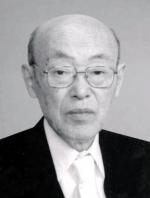

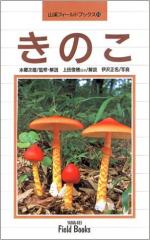



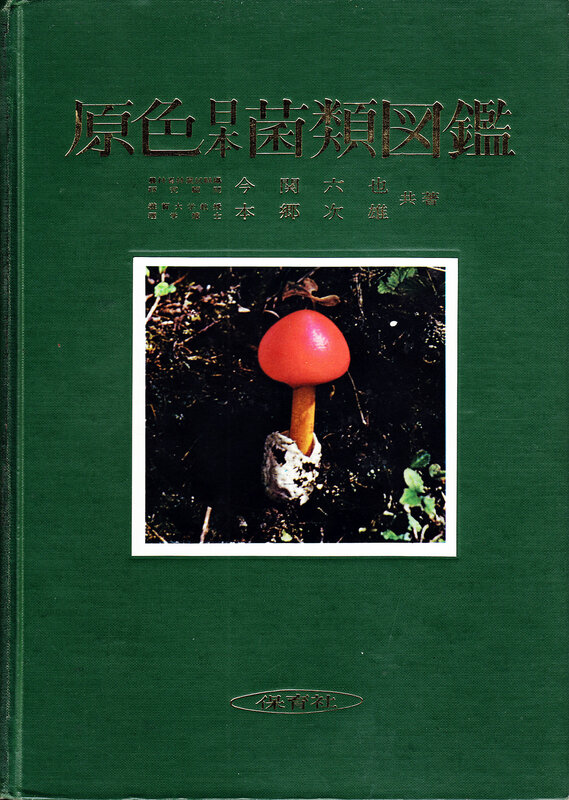
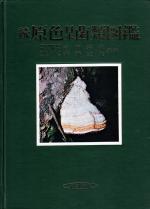
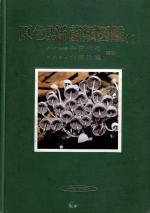

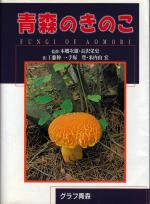

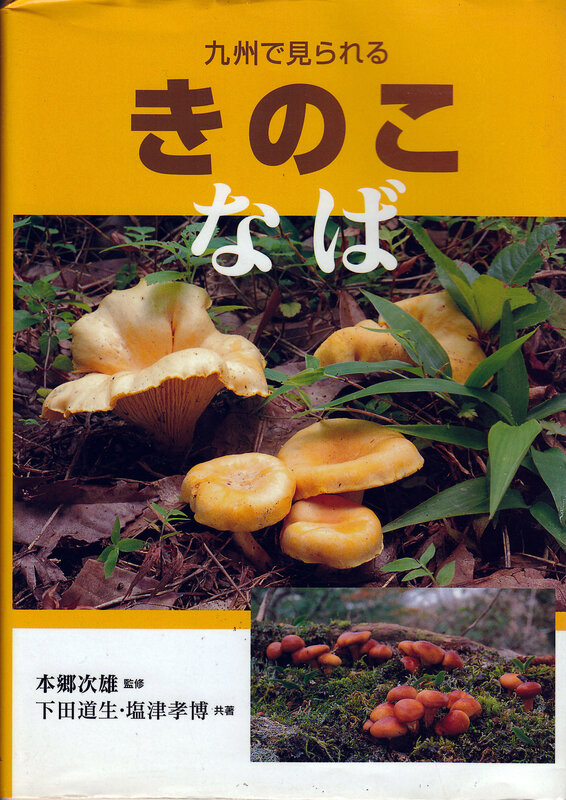

/https%3A%2F%2Fstorage.canalblog.com%2F66%2F68%2F1309869%2F130448355_o.jpg)
/https%3A%2F%2Fstorage.canalblog.com%2F18%2F83%2F1309869%2F130725505_o.jpg)
/https%3A%2F%2Fstorage.canalblog.com%2F08%2F60%2F1309869%2F124740667_o.jpg)
![空木 UTSUGI [卯の花] U-no-Hana](https://image.canalblog.com/Stu5_mNcMQovlluZ6wUexplTNqU=/400x260/smart/filters:no_upscale()/https%3A%2F%2Fstorage.canalblog.com%2F99%2F10%2F1309869%2F123656256_o.jpg)